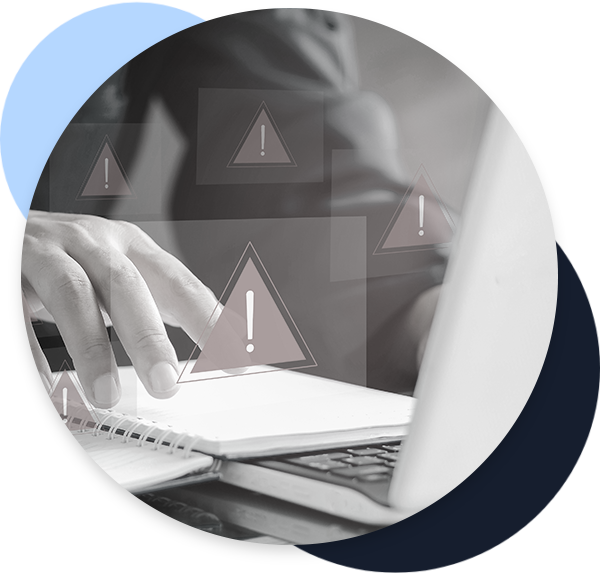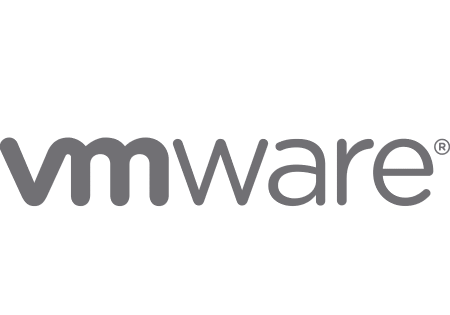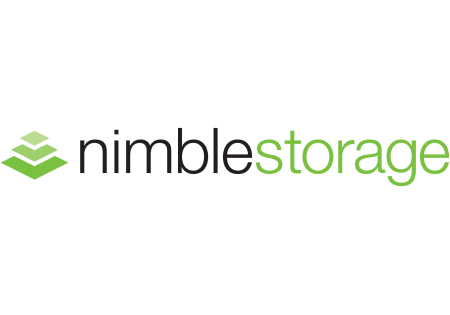BUSINESS CONTINUITY & DISASTER RECOVERY
Prepare for any crisis with in-depth disaster recovery planning
Disasters happen. Equip your business with the right tools and strategies so you can return to normal operations ASAP. We evaluate all levels of risk to your organization, implement protective measures, and create a response plan to guide your recovery actions.

MINIMIZE INTERRUPTION & DOWNTIME
Prepare your business for any situation
Stay up-to-date with emerging threats, take proactive steps to increase protection, and build comprehensive recovery plans.
Identify Potential Threats
We perform thorough risk assessments to determine and rank relevant threats to your business.
Implement Preventive Measures
Protect your organization in the event of a disaster by establishing consistent data backups, following security best practices, and more.
Create Response Plans
Ensure you have the right knowledge and tools to guide your response strategy with a Disaster Recovery Plan (DRP) and a Business Continuity Plan (BCP).
AREAS OF EVALUATION
Assess your current environment & processes
Our analyses and assessments ensure your business has the right tools to minimize impact and downtime.

Data Storage & Backups
Identify your data storage locations and review your current cloud and offsite backups.

Infrastructure Security
Review core processes and equipment and how they could open up vulnerabilities at your business.

Organization Security
Evaluate the security of your physical building and the redundancy of key figures in your organization.

Recovery Needs
Clarify steps your business must take to get back up and running quickly by your Recovery Time Objective (RTO) and Recovery Point Objective (RPO).
GUIDED RESPONSE STRATEGY
Our approach to BCDR plans
We create step-by-step plans to get your company operational, taking your critical systems and downtime tolerance into account.
-
Situation Diagnosis
+
From the beginning, you should have a clear understanding of the event that took place. This includes comprehension of the severity and impact of the event, a way to communicate to those potentially impacted, and the next steps to return your company to a place where it can function.
If an event is going to impact more than a few people for an extended period of time, a chain of command should be documented so people know their roles and responsibilities.
-
Event Recovery
+
A robust BCDR plan offers step-by-step procedures for service restoration, data backup, remote workforce management, facility access, and other relevant areas.
Our process documentation takes threats of any scale into account, whether they’re instances of user error or a complete environmental disaster.
-
Postmortem
+
After the recovery process is over, we will lead a postmortem meeting with stakeholders and relevant teams to measure the success of the plan. We also evaluate whether parts of the original plan need to be updated or altered based on what was learned after the event.
BACKUP SOLUTIONS
Disaster Recovery Software
We provide flexible service offerings and recommend the best option to meet your goals.





INFRASTRUCTURE SECURITY
IT services to support your BCDR plan
We offer a wide variety of IT services to ensure your BCDR plan is fully supported and vetted.
Managed IT Services

Receive rapid response support and monitor your backups to ensure they run smoothly and on schedule.
Cyber Security

Schedule frequent cloud and offsite backups to protect against bad actors, viruses, and human error.
IT Regulatory Compliance
Verify that your business meets necessary backup requirements for data retention & data governance to meet requirements for regulatory compliance or your own policies.
Cloud Services

Ensure that you have separate backups for all information stored offsite in case of outages or other events.
HELPING PEOPLE ACCOMPLISH MORE
Raving Fans
We are not satisfied if you are just satisfied. We want you to be a Raving Fan as a result of providing the absolute best service!
Gil Hami
 11 months ago
11 months agoWe’ve been working with Miles Technologies for over a decade and it has been a great long term partnership and investment. I trust their team and they have been very responsive to our changing IT needs. Highly recommend!
Patricia Rowe
 a year ago
a year agoMiles Technology offers fast, efficient and professional IT support services. All of my encounters with Miles staff have been so pleasant and the best part is that they listen, offer suggestions and continue to work with you until you work through whatever problem you have. 2 Thumbs up for Miles!
Gina Thiesfeldt
 a year ago
a year agoThe tech’s at Miles IT are knowledgeable, friendly and helpful. I can’t say enough good about them. They always seem to go above and beyond and not only fix my issues but also explain things so we don’t have future issues. They are patient and thorough. I highly recommend working with the Miles IT team!
Services Recommended For You
Proactive Cybersecurity
Software Development
Website Maintenance & Security
FAQ
-
Disaster Recovery (DR) vs. Business Continuity Planning (BCP)
+
Disaster recovery is about restoring vital communications and IT systems when those services are disrupted either by an environmental event (e.g., hurricane, flooding, fire, etc.) or cyber event (e.g., malware, unauthorized access, file corruption, or data highjacking).
Business continuity planning is much broader in scope because it covers any reason (think, COVID-19) business operations could be in jeopardy, not just a disruption in IT systems. An effective DR plan is one of many components of a solid business continuity plan.
-
I have a backup system. Isn’t that good enough?
+
A backup system is just one component of a robust DR strategy—the idea behind DR is that you have a plan/process for how to use that backup when the necessity arises. It is important to ensure your backup system is comprehensive, functional, and available to be used during a disaster.
-
How do I measure my company’s tolerance for downtime?
+
RTO & RPO (recovery time objective and recovery point objective) are two key metrics that organizations must consider in order to develop an appropriate disaster recovery plan that can maintain business continuity after an unplanned event.
RTO. When disaster strikes, how much time do you have to get your IT systems back up and running before you can no longer maintain effective business operations?
RPO. How much data (measured in time) are you willing to lose in the event of a disaster/disruption? How fresh or stale is the data since the last valid backup was performed?
-
How often should I test my BCDR plan?
+
There is no one answer to this question. If the DR portion of the plan relies on technology, it is important to ensure frequently that it’s in a recoverable state. Other DR components, such as communications or a tabletop test for the business side of it, should, as a rule of thumb, be tested every year or after a major infrastructure or business process change is implemented.
There is no reason why the components can’t be tested individually rather than the traditional idea of “shut everything down and run from the recovery.”

